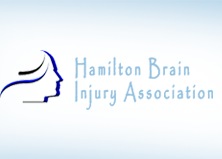 Hamilton Brain Injury Association
Hamilton Brain Injury Association
Once again we are happy to be supporting the 2016 Hamilton Brain Injury Association (HBIA) Dinner being held at the Liuna Station in Hamilton on November 17th, 2016. This will be the 10th annual fundraising dinner for Hamilton Brain Injury Association. LDOT is excited to be a centre piece sponsor this year and happy to show our support by purchasing a full table and will be attending as a team to show our support.
HBIA is an asset to our community providing support, education and advocacy for brain injury survivors and their families.
ABILITY – the correct skills and/or mental and physical fitness to perform in a competent way.
ABNORMAL – different from the average; inappropriate with regard to the standards of society, social role or the existing set of circumstances.
ABSTRACT ATTITUDE- an objective, detached, impersonal state of mind.
ABSTRACT CONCEPT – a concept or idea not related to any specific instance or object and which potentially can be applied to many different situations or objects. People with cognitive deficits often have difficulty understanding abstract concepts.
ABSTRACT THINKING – the ability to apply abstract concepts to situations and surroundings. It is characterized by adaptability in the use of ideas and generalization.
ACTING OUT – impulsive; anti-social behavior.
ACALCULIA – the inability to perform simple problems of arithmetic.
ACUITY – sharpness or quality of a sensation. Keenness of perception.
ACUTE – sharp, severe. 2. Having rapid onset, severe symptoms and a short course. The early stages of an injury (as opposed to chronic, which is long term).
ADAPTIVE / ASSISTIVE EQUIPMENT – a special device which assists in the performance of self care, work, play or leisure activities.
ADL – activities of daily living. Routine activities carried out for personal hygiene and health such as eating, dressing, grooming, shaving, etc. Nurses, occupational and physical therapists are the main coaches for ADL, which is sometimes called DLS or daily living skills.
ADVOCACY – support; help, promoting a cause.
AFFECT – feeling tones; emotions; the outward signs of individual emotions.
AFFECTIVE – having to do with emotions.
AGITATION – a state of restless activity such as pacing, crying or laughing without apparent reason.
AGGRESSIVENESS – a state of irritability; combativeness.
AGNOSIA – failure to recognize familiar objects although the sensory mechanism is intact. May occur for any sensory modality.
AMBIVALENCE – contradictory feelings about an object, person or action, emotion, idea, situation, etc. .
AMBULATION – to walk.
AMNESIA – lack of memory about events occurring during a particular period of time.
ANEURYSM – a balloon-like deformity in the wall of a blood vessel. The wall weakens as the balloon grows larger, and may eventually burst, causing a hemorrhage.
ANOMIA – inability to recall names of objects. Persons with this problem often can speak fluently but have to use other words to describe familiar objects.
ANOSMIA – loss of the sense of smell. SYN: anodmia
ANOXIA – a lack of oxygen. Cells of the brain need oxygen to stay alive. When blood flow to the brain is reduced or when oxygen in the blood is too low, brain cells are damaged.
ANTERIOR INJURY – front.
ANTEROGRADE AMNESIA – inability to consolidate information about ongoing events. Difficulty forming new memories. Shrot- term annesia.
ANTERO-LATERAL INJURY- front and to the side.
ANTERO-POSTERIOR INJURY- gront and to the back.
ANTICONVULSANT – meditation used to decrease the possibility of a seizure (e.g., Dilantin, Phenobarbital, Mysoline, Tegrtol).
ANTI-SOCIAL BEHAVIOR – behavior which is contrary to the customs, standards and moral principles accepted by society.
ANXIETY – feelings of apprehension, uneasiness, agitation, uncertainty and fear because of threat or danger.
APATHY – indifference. Lack of emotiom, concern or interest.
APHASIA – the change in language function due to an injury to the cerebral cortex of brain. It causes partial or total loss of ability to express oneself and/or to understand language.
APRAXIA – the inability to produce voluntary speech due to a deficit in motor (muscle) programming caused by brain damage.
ARACHNOID MEMBRANE – the middle of three membranes protecting the brain and spinal cord.
AROUSAL – being awake. Primitive state of alertness managed by the reticular activating system (extending from medulla to the thalamus in the core of the brainstem) activating the cortex. Cognition is not possible without some degree of arousal.
ARTERIAL LINE – a very thin tube (catheter) inserted into an artery to allow direct measurement of the blood pressure, the oxygen and carbon dioxide concentrations in arterial blood.
ARTICULATION – movement of the lips, tongue, teeth and palate into specific patterns for purposes of speech. Also, a movable joint.
ASSESSMENT – an evaluation of a patient based on the following information: 1. the subjective report of the symptoms by the patient. 2. the progress of the illness or condition. 3. the objective findings of the examiner based on tests, physical examination and medical history.
ATAXIA- a problem of muscle coordination not due to apraxia, weakness, rigidity, spasticity or sensory loss. Caused by lesion of the cerebellum or basal ganglia. Can interfere with a person’s ability to walk, talk, eat and to perform other self care tasks.
ATTENTION – the ability to focus on given task or set of stimuli for an appropriate period of time.
ATTENTION DEFICITS – impaired ability to concentrate.
AUDIOLOGIST – one who evaluates hearing defects and who aids in the rehabilitation of those who have such defects.
AUTOMATIC – spontaneous; involuntary
AUTOMATISM – automatic actions or behavior without conscious volition or knowledge. Such episodes might last for a few minutes or a few days. During such episodes, the person appears normal but, is actually in a trance like state. While in such a state the person is not responsible for his acts and should not be left alone. He may carry out complicated acts without remembering having done so. Such episodes have been associated with severe emotional distress and temporal motor epilepsy.
AUTONOMIC NERVOUS SYSTEM – the part of the nervous system that controls involuntary activities, including heart muscle, glands, and smooth muscle tissue. The autonomic nervous system is subdivided into the sympathetic and parasympathetic systems. Sympathetic activities are marked by the flight or fight emergency response, initiated by way of the transmitter norepinephrine (adrenaline). Parasympathetic activities are known by lowered blood pressure, pupil contradiction and slowing of
the heart.
REDUCED AWARENESS – insight; understanding is not clear.
AXON – the nerve fiber that carries an impulse from the nerve cell to a target, and also carries materials from the nerve terminals back to the nerve cell. When an axon is cut, proteins required for
its regeneration are made available by the nerve cell body. A growth cone forms at the tip of the axon. In the spinal cord, a damaged axon is often prepared to re-grow, and often has available a supply of materials to do so. Scientists believe it is the toxic environment that surrounds the axon, and not the genetic programming of the axon itself, that prevents regeneration.

